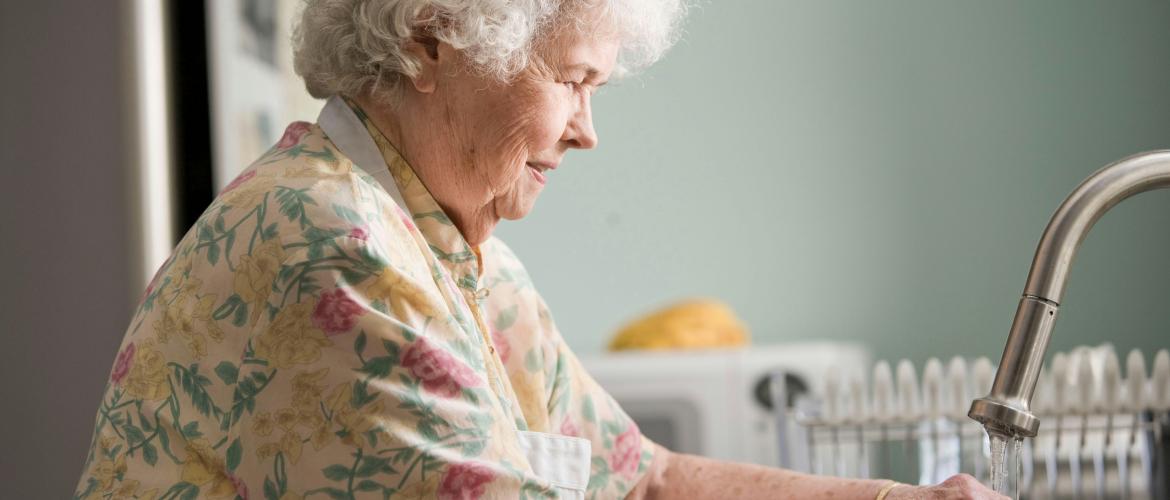
How to improve home safety for the elderly
Caring for an elderly relative at home has many challenges, but safety should be the primary consideration. Effective elderly home safety involves a number of steps and should be reviewed regularly to ensure provision is keeping up with the evolving needs of your loved one.
Follow this home safety checklist to tackle the task of creating an appropriate environment one step at a time. That way you’ll know you haven’t missed anything and can enjoy the peace of mind that potential dangers have been minimised.
Identify potential hazards
The first thing to do when considering safety in the home is to assess what you’re working with. Take the dwelling one room at a time and identify any hazards, paying particular attention to fall risks, fire safety for the elderly, poor lighting and the potential for accidents.
Write everything down so that they can be dealt with systematically, as it’s likely creating a safe space for your loved one will include a range of solutions. Some of these will be preventative, while others will be put in place to ensure your elderly relative can get help in the case of an incident.
Prevent the risk of falls
Changes in vision, decreased strength and balance, cognitive impairment and even some medications can increase the risk of falls, which can in turn lead to further health complications. This makes fall prevention in seniors a priority.
As well as installing grab rails, there are some very simple measures that will also reduce the chances of falling. They include moving rugs that could present a trip hazard and ensuring areas aren’t left cluttered. Walk around your loved one’s home, taking well-used routes like the one between the kitchen and their favourite chair to see what could be in the way.
Improve bathroom safety
Bathrooms have a unique set of conditions that make them particularly susceptible to being the location of accidents. A wet environment, shiny surfaces and hot water can all pose a danger to the elderly, especially when combined, so it’s worth taking a number of small precautions.
A bathroom that’s set up properly to give your elderly loved one as much independence as possible should have grab bars next to the shower and toilet, as well as rubber mats. A walk-in bathtub, shower chair and raised toilet can all minimise risk and make life easier. Make sure that the water heater is also set low enough to prevent scalding and check it regularly.
Ensure the kitchen is safe to use
Similarly to the bathroom, the kitchen is a high risk area, but that doesn’t mean it can’t be adapted for ease of use. Install an induction hob that won’t get hot without a pan on it to help prevent accidents and source utensils with easy-grip handles.
You may want to think about lowering the counter tops, but less disruptive measures include adding extra lighting and adding anti-slip stickers to the floor. Even things like door handles can become difficult for someone with arthritis or a similar condition, but these can often be swapped out for more user-friendly door pulls.
Make home modifications
Other modifications to take into consideration are installing a stair lift or ramp for wheelchair users, lowering the level of the bed and putting safety bed rails for the elderly in place. If you’re not sure where to start, then it can be a good idea to apply for a home assessment from your local council, who will send a professional to work out what’s required.
When putting infrastructure in place, it’s important to address the specific needs of your loved one and adapt their home with the appropriate solutions. Talk to them about the possible changes you could make and involve them in the decision-making process.
Prepare for emergencies
While many of the precautions you will take are designed to prevent accidents, it’s important to have systems in place should an emergency occur. Depending on the individual, this could include a list of emergency contact phone numbers or a personal safety alarm for the elderly. There’s lots of assistive technology available for each level of need.
Make sure that your loved one knows what they should do in case of an emergency, as they may be disoriented or confused. Think about friends and relatives that live close by and how long it would take for them to get there should there be an incident. An emergency phone tree is a good way of laying out who should be alerted and when.
Involve family members
Whatever measures are put in place, there’s no substitute for loved ones checking in on an elderly relative. Not only is this useful to address any issues the individual is having, but it’s an opportunity to look out for hazards they perhaps haven't noticed.
It can be a good idea to organise this as a rota or schedule, so that visits are fairly evenly spread out, without long gaps without any contact. Relatives should then talk to each other about any big adaptations that they’ve noticed need to happen as their loved one’s requirements evolve.


